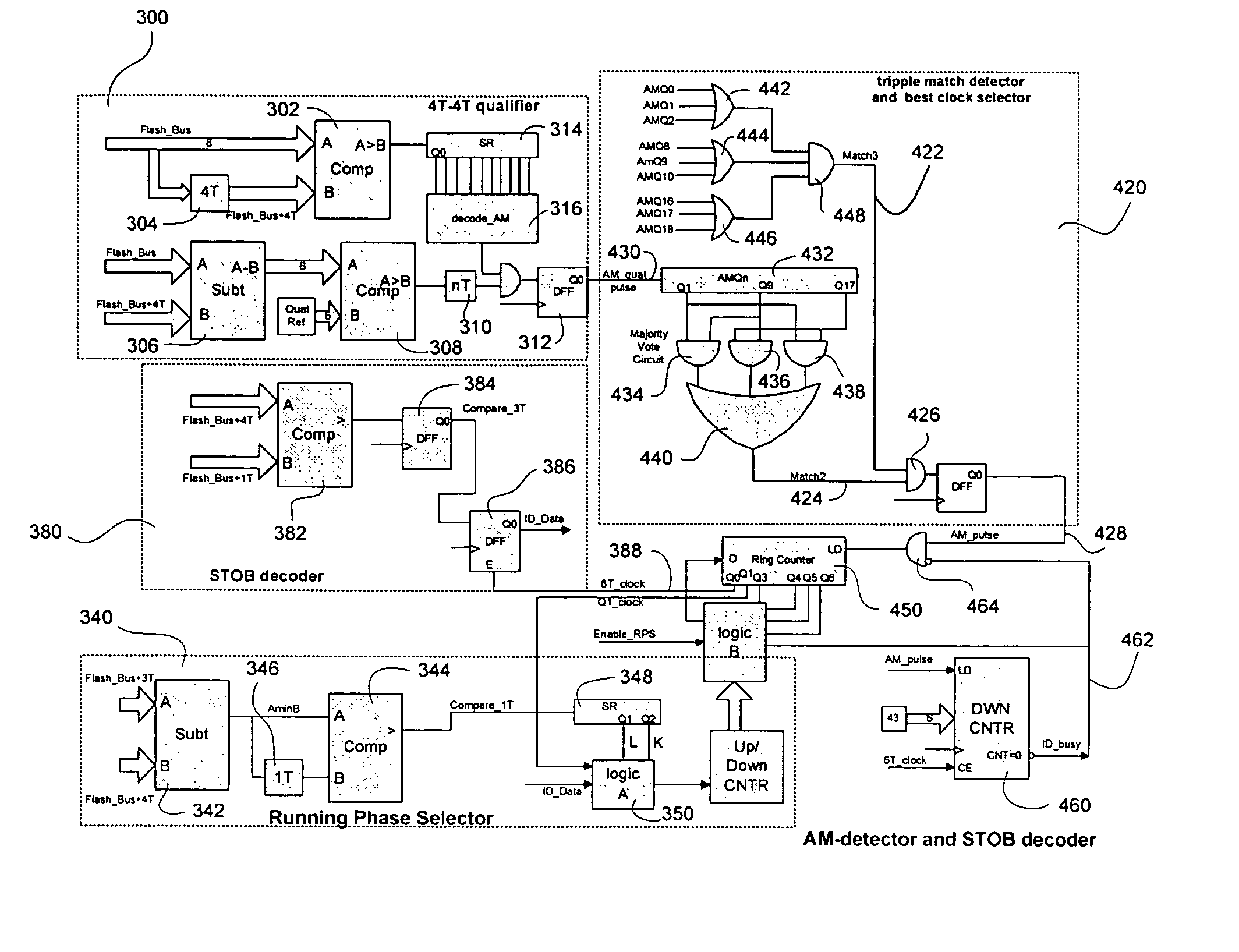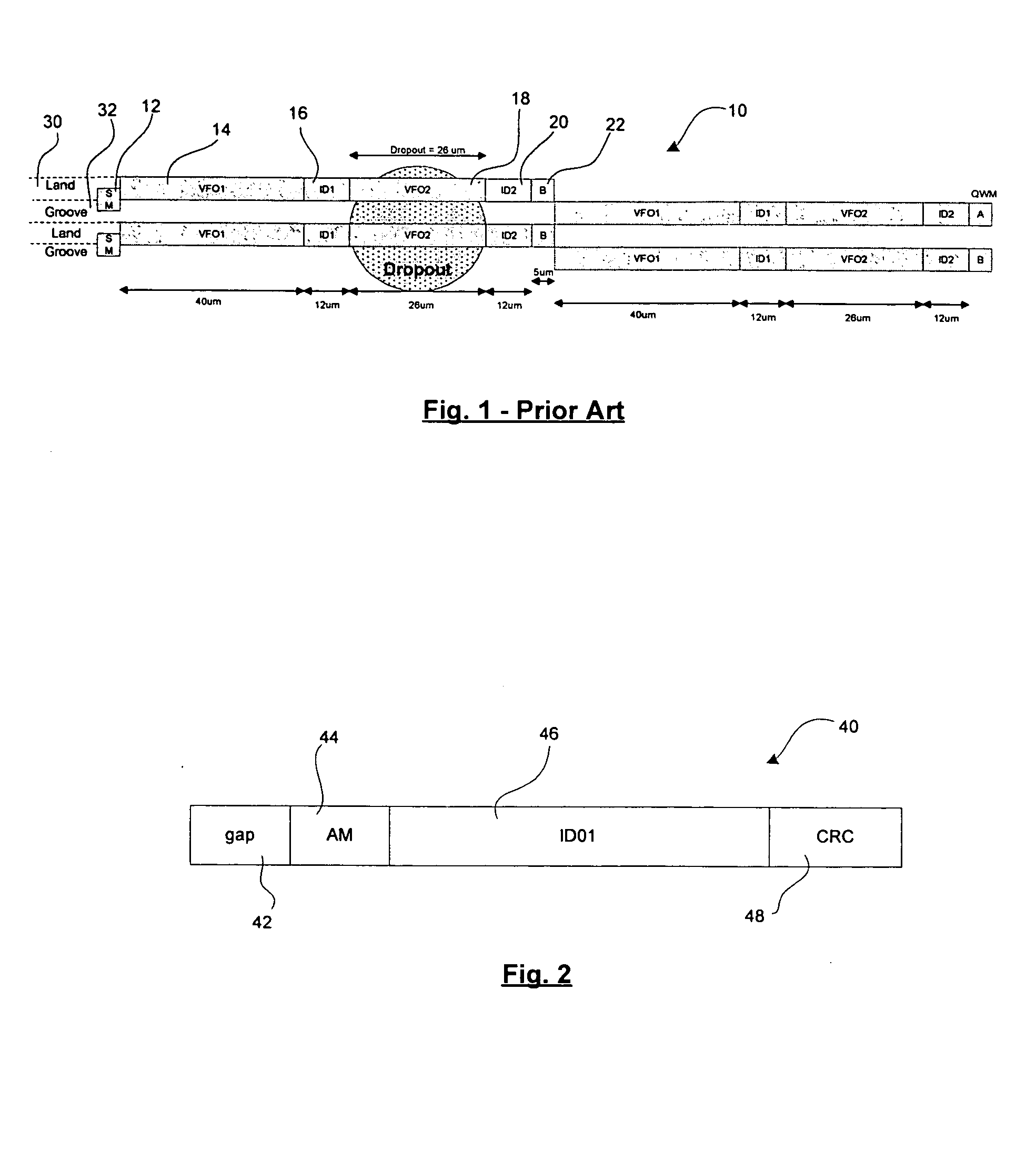Robust header configuration and method for reading sector identifiers contained therein
a header configuration and sector identifier technology, applied in the field of data storage devices, can solve the problems of skew timing, data errors, prone to inherent errors, etc., and achieve the effects of reducing error sources, robust and efficient, and robust and reliabl
- Summary
- Abstract
- Description
- Claims
- Application Information
AI Technical Summary
Benefits of technology
Problems solved by technology
Method used
Image
Examples
Embodiment Construction
[0042] As mentioned above, the present invention provides a robust header structure which can be used to reliably and efficiently provide sector addressing. The header is specifically designed to be dust and defect tolerant. Further, the design allows for redundancy and eliminates the need for several complex systems.
[0043] Referring now to FIG. 2, there is illustrated a general outline of the addressing component utilized in the preferred embodiment. More specifically, FIG. 2 illustrates an address block 40 which is an important component of the header. Address block 40 utilizes a predefined structure which has a gap or space 42 at the initial portion thereof. Secondly, an address mark (AM) 44 is utilized to signal the coming of an address field 46. Address mark 44 is chosen to be a pattern that will not occur in the subsequent addressing code. Consequently, the detection of address mark 44 is easily accomplished. Once detected, address mark 44 will cause the clock to be held at i...
PUM
| Property | Measurement | Unit |
|---|---|---|
| length | aaaaa | aaaaa |
| length | aaaaa | aaaaa |
| size | aaaaa | aaaaa |
Abstract
Description
Claims
Application Information
 Login to View More
Login to View More - R&D
- Intellectual Property
- Life Sciences
- Materials
- Tech Scout
- Unparalleled Data Quality
- Higher Quality Content
- 60% Fewer Hallucinations
Browse by: Latest US Patents, China's latest patents, Technical Efficacy Thesaurus, Application Domain, Technology Topic, Popular Technical Reports.
© 2025 PatSnap. All rights reserved.Legal|Privacy policy|Modern Slavery Act Transparency Statement|Sitemap|About US| Contact US: help@patsnap.com



